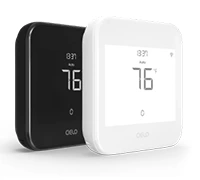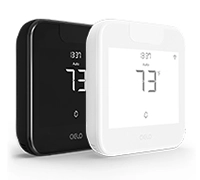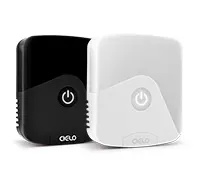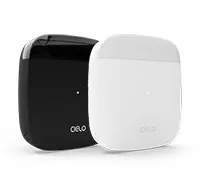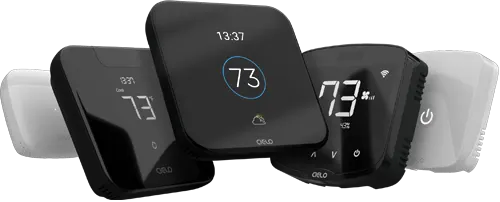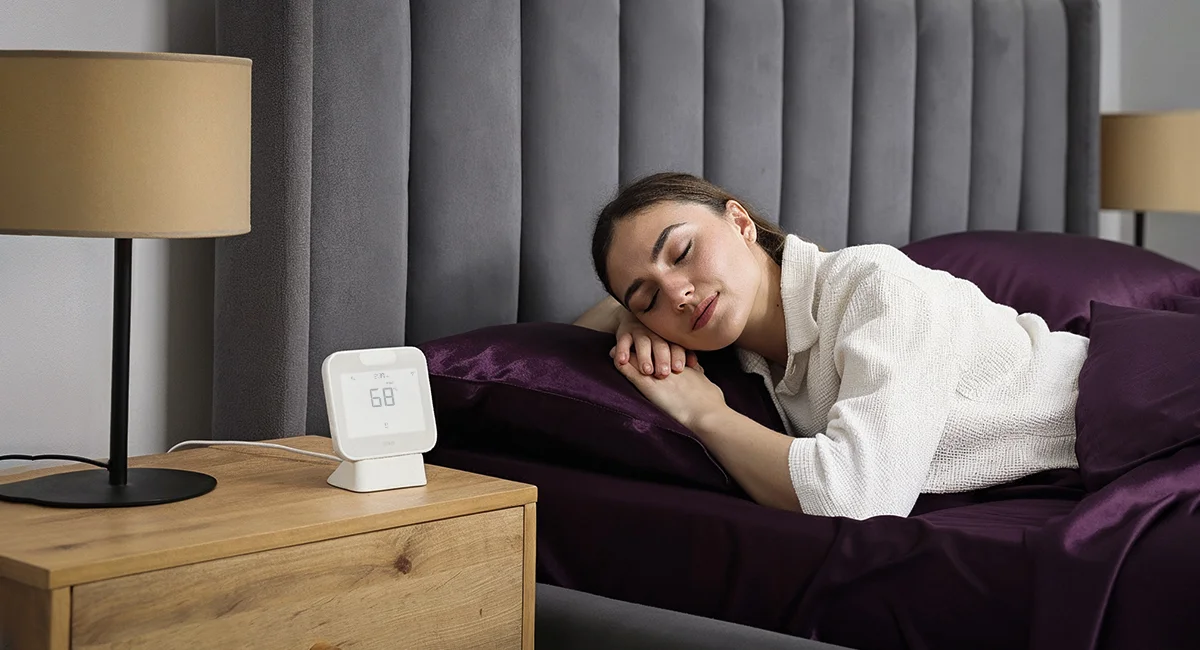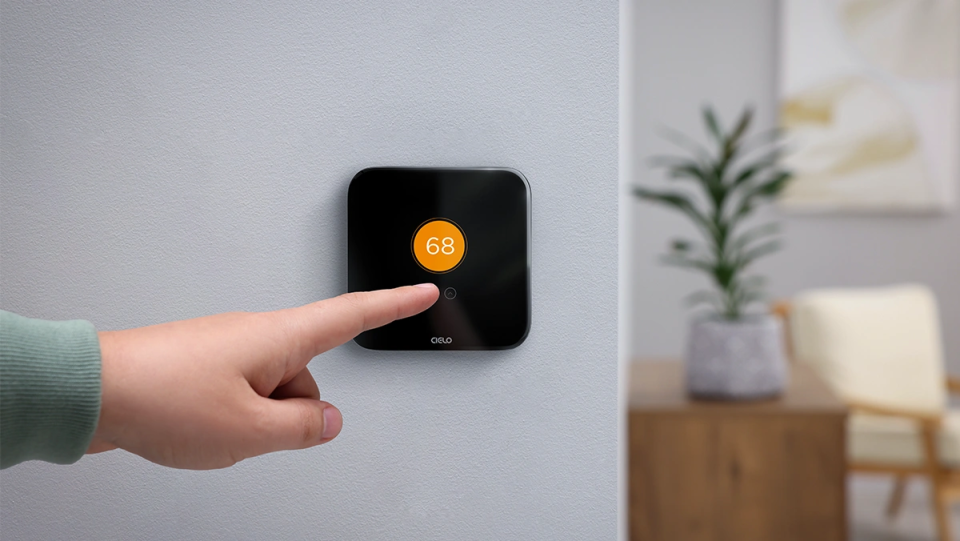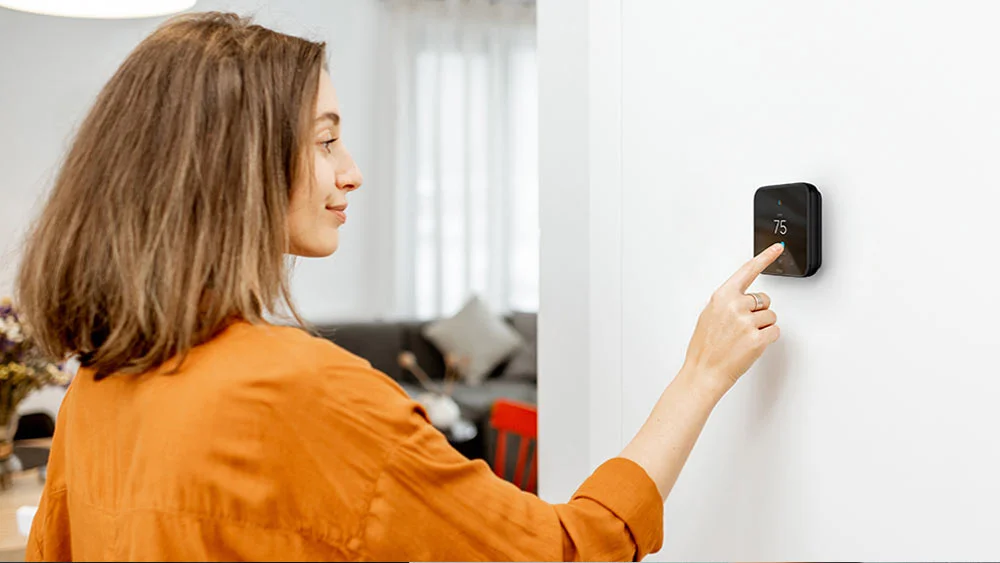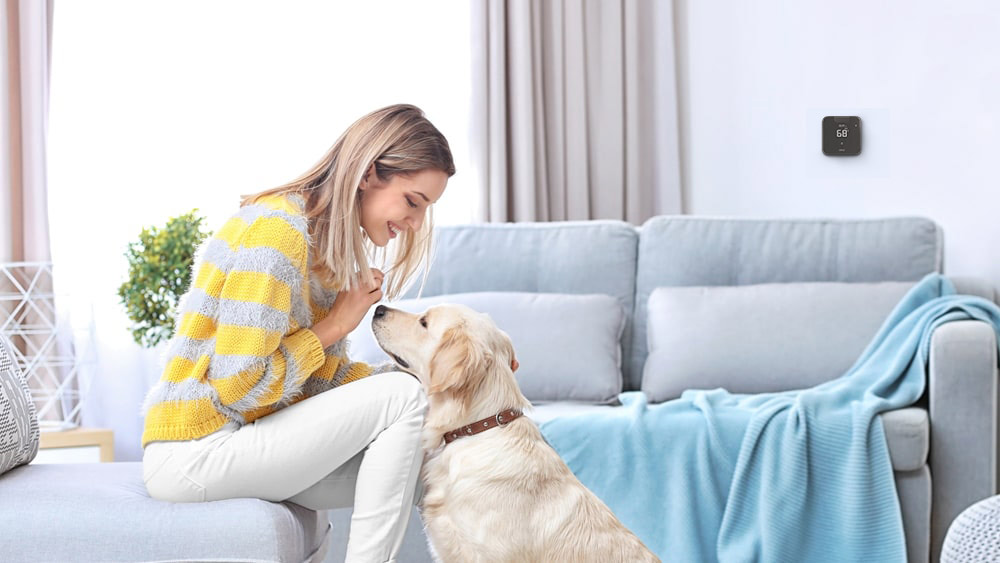
- Dogs with thin coats, puppies, older dogs, and those with certain health conditions like arthritis are especially vulnerable to frigid temperatures.
- Heated dog houses help protect your pet from cold-related health risks like hypothermia.
- In addition to a heated dog house, heating accessories like heated beds and heaters also provide warmth and comfort.
As pet parents, it’s important to prioritize the well-being of your furry friends, especially when it comes to extreme weather conditions. While dogs may have fur coats, most cannot endure extended exposure to frigid temperatures, except for breeds that are specifically adapted for cold climates.
This is where heated dog houses can come in handy, especially when spending time outdoors in the cold weather. These houses not only provide the necessary warmth your dog needs to stay cozy but also give them the freedom to play outside without the risk of developing cold-related health issues.
This blog highlights some of the best outdoor heated dog houses available to keep your pet comfortable. And if a heated house isn’t in your budget, it also explores affordable alternatives to help create a cozy space for your furry friend.
- How Cold Weather Impacts Your Dog?
- Should You Invest in a Heated Dog House for Your Pet?
- 6 Best Heated Dog Houses for Outdoors
- Heating Accessories for a Cozy Dog House
- What to Look For When Buying a Heated Dog House?
- Additional Tips to Keep Your Dog Warm in Winter
- How to Keep Your Dogs Warm Outside
- Frequently Asked Questions
How Cold Weather Impacts Your Dog?
Each dog reacts differently to cold weather based on its breed, coat length and size, age, and health factors. The signs that your dog is feeling too cold include shaking, reduced movements, and body huddling for protection from low temperatures. Extra heat becomes necessary for dogs to survive extremely cold temperatures.
-
Dog Coat Thickness
Dogs with thick or double-layer coats may also be well-suited to colder temperatures. For example, Huskies, Saint Bernards, and Malamutes are specifically bred to thrive in cold, harsh climates. However, if your dog has a thin or single-layer coat or short legs that keep them close to the ground, they are more susceptible to the cold. These include Dachshunds, Chihuahuas, Greyhounds, and French Bulldogs.
-
Dog Age & Health
Puppies are vulnerable to cold because they lack developed fat reserves and temperature regulation. Older dogs may have a harder time regulating their body temperature due to age-related factors, such as reduced metabolism and decreased ability to generate body heat. If you have dogs with certain health conditions like arthritis or diabetes, they worsen in cold weather, increasing pain and reducing circulation.
Should You Invest in a Heated Dog House for Your Pet?
While keeping your dog indoors is always the best option during winter, a well-insulated shelter can be essential if your dog spends extended time outside.
According to Daniel Caughill, co-founder of The Dog Tale, “Where you live is also a big factor. A heated dog house might not be necessary in South Carolina, but it’s a great idea if you live in the Upper Peninsula of Michigan. Furthermore, if you live in a cold climate and expect your dog to spend hours in the yard, a heated dog house will allow them to have a place of refuge if temperatures drop or the wind picks up.”
Even cold-tolerant breeds can struggle in extreme winter conditions. Freezing winds, snow, and prolonged exposure to low temperatures put all dogs at risk of hypothermia, frostbite, and joint pain.
A warm and well-protected dog house comes with multiple benefits, including
- Consistent warmth to prevent dangerous drops in body temperature.
- Protection from wind, rain, and snow, keeping your dog dry and comfortable.
- Reduced joint pain and stiffness for senior dogs or those with arthritis.
- A safe retreat for small, short-haired, or vulnerable breeds that struggle with the cold.
- Increases your dog’s outdoor time, which supports their physical health.
6 Best Heated Dog Houses for Outdoors
1. Pets Imperial Insulated Dog Kennel
Ideal for: Large breeds
The Pets Imperial Extra-Large Insulated Dog Kennel offers maximum heat retention with three layers of insulation.
Top Features:
- Timber, Styrofoam, and plywood insulation for temperature control.
- Asphalt roof for extra weatherproofing.
- Elevated floor to prevent cold air from seeping in.
- PVC strip curtain at the entrance to block wind and drafts.
2. Tepoal Heated Outdoor Cat House
Ideal for Small dogs, puppies, and outdoor cats needing a warm, insulated shelter.
The Tepoal Heated Outdoor Cat House features a fully waterproof, elevated design, ensuring a dry and cozy space even in freezing temperatures.
Top Features:
- Highly insulated with five layers of waterproof materials.
- Elevated base keeps pets dry in rain or snow.
- Ensures a cozy refuge even in temperatures below 45F.
- UL-certified heating pad for safe and consistent warmth.
- FCC-approved safety features for a secure and comfortable environment.
3. K&H Pet Thermo Tent Heated Shelter
Ideal for: Lightweight, portable outdoor shelter
The K&H Thermo Tent Heated Shelter offers a tent-style design, providing a cozy and insulated space to keep your dog warm outdoors.
Top Features
- Lightweight and easy to set up—no tools required.
- Water-resistant nylon exterior for added durability.
- The heated pad inside provides a warm sleeping area.
- Certified by MET Labs for safety compliance.
4. Giantex Insulated Dog House
Ideal for: Small to medium-sized dogs, wet climates
The Giantex Dog House provides strong insulation and weather protection, making it a great choice for rainy and snowy conditions.
Top Features
- Durable, weatherproof plastic construction.
- Elevated floor design that promotes ventilation and helps keep the interior dry in case of rain.
- Detachable roof for easy cleaning.
5. Turbo Heated Dog House Outdoor
Ideal for: Small to medium-sized dogs, cold and wet climates
This dog house features built-in heating technology along with insulation made of PVC to deliver constant warmth throughout the year. The thermostatic control heating pad operates with a safety feature that safeguards against heat accidents.
Top Features
- The product features a 14.7-foot power cord that heats its contents along with an integrated heating pad.
- You get protection from water through the exterior Oxford cloth, and the base rests higher above the ground to stop moisture seepage.
- Iron frame construction for superior durability over traditional pet houses.
- Door flaps on the house come with self-adhesive material that uses magnets and Velcro to block cold air from entering.
- Tool-free assembly for quick setup and easy disassembly.
6. Petmate Indigo Igloo-Style Heated Dog House
Ideal for: Dogs of all sizes, cold and wet climates
The Petmate Igloo Dog House provides maximum insulation against weather elements because it combines exceptional material durability with its special igloo design.
Top Features
- The igloo-shaped structure provides dual advantages of defending against the wind and maintaining superior insulation performance.
- The elevation of the floor ensures the house stays dry during all weather conditions.
- The design protects pets better through its unique placement of the tunnel door, which extends beyond the center.
Heating Accessories for a Cozy Dog House
These are add-ons or equipment designed to heat your dog house and keep it comfortable. Heating accessories can include dog house heaters, heating pads, heated beds, and ductless heat pumps.
1. K&H Thermo-Snuggly Heated Bolster Pet Bed
The K&H thermo-snuggly heated bed presents a luxurious and cozy haven for your dog. With its thermostat-controlled electric heating system, this bed will automatically warm to your dog’s normal body temperature when they are in it. With its low-wattage heater that consumes only 6 watts, you can rest assured knowing that you are not wasting electricity.
2. Window Heat Pump
Window heat pumps are a great option if your dog house doesn’t have much floor space. They can efficiently heat and cool your dog house so that you can use them all year round.
You can make your window heat pump smart by pairing it with a window AC thermostat, also known as a smart thermostat for ductless systems. Whether you are away at work or engaged in other activities, the smart thermostat empowers you to monitor and adjust the temperature within the dog house from anywhere using your phone.
Your best choice to make any mini-split, window,
or portable AC smart. Enhance your comfort and savings.
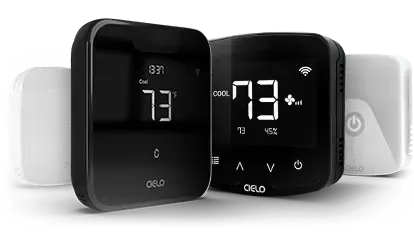
3. Portable Heat Pump
A portable heat pump provides an excellent option for heating small spaces such as dog houses. Similar to the window heat pump, it also provides both heating and cooling. You can easily install it in the dog house; you just have to route the exhaust hose out of the window or a small hole in the wall.
These units often come with adjustable settings for temperature and fan speed, allowing you to customize the climate to your pet’s comfort. You can also pair them with a smart thermostat for ductless units for smart functionality.
4. Hound Heater by Akoma Pet Products
If you are looking to install a heater for your dog house, this Akoma Hound Heater is an excellent option. This dog house heater provides the flexibility to adjust between a wide range of temperatures, between 30F and 80F. To prevent overheating, it runs only when required, and the temperature can be controlled using a smartphone. Plus, itincorporates lower heat shields, which allow your dog to get close to the heater without any danger.
5. Kiroto Dog House Heater
The Kiroto dog house heater features a 6.5 ft external temperature probe for precise monitoring of the dog house temperature. This ensures optimal performance, as the heater operates based on the actual conditions inside, delivering a consistently warm environment.
With the added convenience of WiFi capability, users can easily adjust temperature and time settings remotely, eliminating the need to be physically present near the dog house.
What to Look For When Buying a Heated Dog House?
1. Dog House Size
- A heated dog house needs enough space for movement, yet it should not be too large to lose heat.
- Measure your dog’s height and length to ensure a comfortable fit.
- Consider cubic footage, not just floor space, for warmth retention.
- If using an external heater, ensure even heat distribution.
Pro Tip: A snug fit retains heat better, while an oversized house may struggle to stay warm.
2. Insulation
Proper insulation ensures the trapping of heat and the blocking of cold air. Without it, warmth escapes, making the heater work harder.
- Foam insulation offers excellent thermal protection.
- Double-walled plastic or wood panels help retain warmth.
- Weatherproof seals prevent drafts and heat loss.
Pro Tip: Look for dog houses with multi-layer insulation for maximum heat efficiency.
3. Climate & Location
Your local climate affects how much heating power you need.
- Cold climates – Choose heavily insulated houses with built-in heating.
- Mild climates – Insulated houses may be enough without extra heating.
- Extreme weather zones – Place the dog house in a sheltered area away from wind and snow buildup.
Pro Tip: Elevate the house to avoid flooding or moisture damage.
4. Safety Features
Heated dog houses should include built-in safety features to prevent overheating or accidents.
- Automatic shut-off prevents overheating.
- Chew-resistant cords protect against chewing hazards.
- A weatherproof power supply ensures safe outdoor use.
- Secure heating elements prevent accidental burns.
Pro Tip: Look for MET certification to ensure they meet safety standards.
5. Heating Pad Size
Choosing the right size heating pad for a dog house is highly important for your dog’s comfort.
- The pad should not cover the entire floor—your dog needs a cool spot to regulate body temperature.
- Thermostat-controlled pads provide safe, consistent warmth.
Removable heating pads allow seasonal adjustments.
Pro Tip: Low-voltage heated pads minimize electrical risks while keeping energy consumption low.
Additional Tips to Keep Your Dog Warm in Winter
If buying a heated dog house isn’t an option, you can opt for alternative methods to heat a dog house that focus on insulation, warmth retention, and efficient use of heat sources such as sunlight.
-
Opt for a Sunny Spot to Place Your Dog House
Placing your dog house in a spot where it gets direct sunlight can provide valuable solar gain to keep them warm. Additionally, painting the house a dark color can enhance its ability to absorb warmth from the sun. However, even the warmest house can be rendered uncomfortable by strong, chilly winds. To guarantee your furry companion’s comfort, make sure the door of their house is protected from or turned away from gusts of wind.
-
Insulate Your Dog House
It is important to ensure that your furry companion is comfortable and warm during the cold months. Insulating your dog house is the first step to achieving this goal.
You can use traditional home insulation products like pet-safe caulk, foam board, aluminum foil, or fiberglass rolls to line the floor, walls, and ceiling. It’s important to keep in mind the safety of your dog while using insulation products, as ingesting or chewing on them can cause harm. Installing plywood or any other thick board over the insulation can prevent this.
-
Create A Solar Heated Dog House
By harnessing the power of the sun, you can provide your furry friend with a warm living space. With just an inexpensive setup that includes solar panels and an inverter, you can power your dog house heater.
-
Opt for Hot Water Bottles
Fill hot water bottles with warm (not hot) water and place them in your dog’s bed or under their blanket. This provides localized warmth that can last for several hours.
-
Use Warming Lamps
Ceiling-mounted heat lamps for dog houses can be installed to provide radiant warmth. Ensure they are securely mounted and out of your dog’s reach to prevent accidents.
-
DIY Dog House Heater
If you don’t want to invest in a dog house heater, there are simpler solutions out there that won’t put a strain on your wallet. One such solution is a DIY heater which you can make using uncooked rice and a sock. You can heat it in the microwave before placing it in your dog house to keep them toasty. While this may only be a short-term solution, it’s an effective one that doesn’t require any electricity.
How to Keep Your Dogs Warm Outside
As the colder months approach, it’s important to ensure your dog has a warm and comfortable space to retreat to when playing outside. This is where heated dog houses come in. They come in various types: some are electrically heated houses, while others are insulated dog houses without a heater. Regardless of the style, proper installation and maintenance are key to ensuring your pet’s safety and security. Make sure to place the dog house in an ideal location, free from weather exposure or hazards. For those utilizing electrical heating, always ensure your outlets are up to code and regularly check that the components are functioning properly and are comfortable for your pet.
Frequently Asked Questions
What Is a Comfortable Winter Temperature for Your Dog?
The ideal temperature for a dog depends on various factors like breed, age, health, coat type, and weight. For larger dogs with thicker coats, a temperature range of 69F-70F is ideal. This temperature will keep them cool and comfortable without causing any discomfort or risk of overheating. The smaller dogs or those with thinner coats prefer a slightly warmer environment, ranging from 73F to 75F.
When the temperature falls to 45F or lower, you may notice your dog whining, moving slowly, seeming lethargic, and shivering; these are all telltale symptoms that your dog is feeling the chill. If your dog is left outside when temperatures are below 20F, it can suffer from frostbite or hypothermia.
Which Temperatures Aren’t Considered Safe Inside a Dog House?
Temperatures over 80F can result in overheating, particularly in a small space.
Can a Dog Stay in a Heated Dog House During Winter?
A heated dog house can provide a cozy retreat, but it should serve as a secondary shelter in protected areas like garages, porches, or sheds. For your dog's health and well-being, they must spend most of their time indoors, especially when temperatures drop. Indoor living offers consistent warmth, protection from harsh weather, and necessary social interaction for their overall happiness.
Are Heated Dog Houses Safe?
Heated dog houses and dog house heaters are safe if used responsibly and in accordance with the manufacturer’s guidelines. Opt for products from reputable sources with proper certifications to ensure the quality and safety of the home. It is essential to monitor the heating elements, cords, and overall condition of the dog house regularly. You should address any signs of malfunctioning promptly. Never leave your pet unsupervised in the heated dog house for a long period.
Consider the option that offers temperature control through a thermostat to prevent the house from overheating. Also, provide enough space in the dog house for your pet to escape the heat source if they feel uncomfortable.
Do Igloo Dog Houses Keep Dogs Warm?
Yes, igloo dog houses are designed to help keep dogs warm. Their dome-shaped structure and insulated walls trap heat more effectively than standard dog houses. The curved design reduces wind exposure, while the insulation adds an extra layer of protection against cold weather.
Are Heated Dog Houses Energy-Efficient?
Many modern heated dog houses are designed with energy efficiency in mind. Features like thermostatically controlled heating elements ensure that the heater operates only when necessary, conserving energy.
Additionally, proper insulation reduces the need for continuous heating, further enhancing efficiency.
